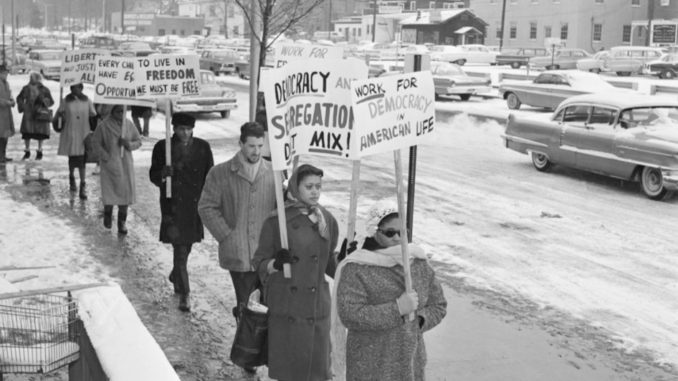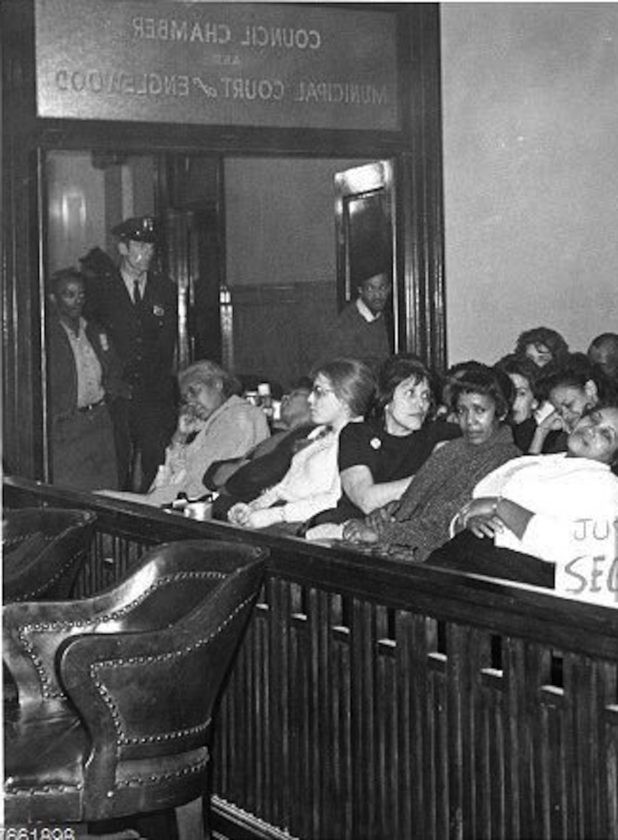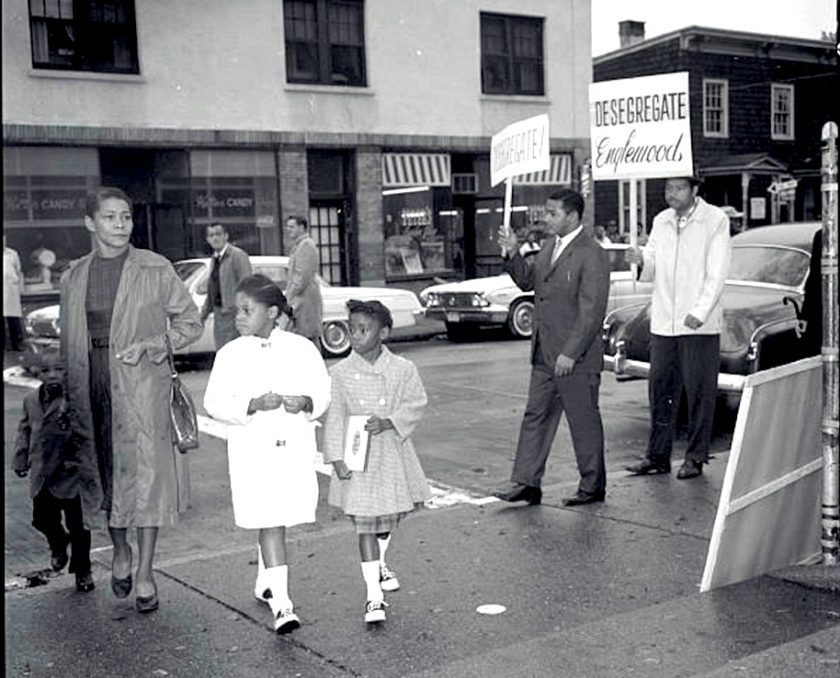

ENGLEWOOD, N.J.—This week back in 1962, Englewood was in the midst of a battle over de facto racial segregation in schools.
According to Englewood officials at the time, the city’s children attended a particular school based on which neighborhood they lived in. The newly built Donald A. Quarles School in the more affluent First Ward was predominately white. At the much older Lincoln School in the Fourth Ward and Liberty School in the Third Ward, there were much larger black populations.
But for many of the city’s black families and the white activists who were on their side, the racial discrepancy between the schools seemed to come down to more than geography.
They charged that the school board since the 1940s had been periodically adjusting school district lines to ensure segregation. Further, they maintained that in the past, white students had been allowed to transfer away from predominately black schools, but the reverse was not true.
In the winter of 1962, the parents of nine black children who attended predominately black elementary schools attempted to have their kids transferred to Quarles School. All of the requests were denied.
“The highly modern school, built in 1959, is located in a wealthy section with big homes and well landscaped lawns. About 95 percent of its pupils are white,” the Associated Press reported at the time. “The nine children now attend the Lincoln School and the Liberty School. Lincoln, built in 1917, is about 95 percent black. Liberty, built in 1907, is about 60 percent black.”
The families retained as their attorney Paul Zuber, who had gained fame for segregation cases in New Rochelle, Chicago, and Newark.
On the evening of Feb. 1, 1962, nearly 250 people attended an Englewood Board of Education budget meeting.
According to news reports from the time, a committee had been assigned to complete a report about school segregation in the city. That report was going to demand that provisions be made in the 1962-1963 budget to allow for desegregation.
However, the school budget was going to be up for formal consideration that night, before the report had been submitted.
That evening, the board was also asked to publicly restate its stand on the student transfers. The board voted unanimously to uphold its decision and reject the nine transfer applicants. The crowd was enraged.
“We have been served notice we are second class citizens,” one person remarked.
In an act of protest and solidarity, black and white residents alike staged an all-night sit-in demonstration in the council chambers.
That group included Belmont Street residents Byron Baer and Patricia Kay. Both were Freedom Riders and members of the Congress of Racial Equality (C.O.R.E.). They had previously been arrested and jailed for sit-in demonstrations in Mississippi.
Baer told reporters, “We will sit in here until the city government takes positive steps to integrate the Englewood school system. We will not be turned away.”
Over the course of the night, a crowd of 90 dwindled to 11. Many were compelled to leave due to family and job obligations.
The people who remained passed the time by talking, singing, telling stories, and napping. At 4:30 a.m. a helper passed two plastic laundry baskets through a window. They contained 18 hamburgers, six malts, two teas, a milk, four packs of cigarettes and two pastries.

Outside the council chambers, the city hall was filled with police officers (many of whom were off duty and had been called in), reporters and photographers. All were waiting for action.
Mayor Austin N. Volk also spent the night at city hall, camping out in his office.
“If they’ve decided to stay, let them stay,” the mayor had said of the demonstrators. “This is a public building. I’m going to stay myself.”
At 8:15 a.m., maintenance men and cleaning people began to arrive in the building. Volk advised the protesters that it was time to go home, so that the room could be cleaned. If they refused, they would face arrest.
“It’s been a long night, but you all look very well,” he told them. “However, I must ask you to leave in 10 minutes. We have to clean the place.”
Still the protesters refused to leave. At 8:30 a.m., a dozen police officers walked through the doors of the council chambers and approached the demonstrators. Each officer addressed one of the protesters individually. Four agreed to leave. The rest were brought to police headquarters and booked.
“What else could we do?” the mayor told reporters.
Among those arrested were Mr. and Mrs. Norman Hill of New York City (Mr. Hill being the secretary of C.O.R.E.); Patricia Hainey, a housewife from Belmont Street; Byron Baer and his wife; Vera Fyer of West Hudson Avenue, a housewife; Angela McLinn of Mountainview Road, a housewife; Mrs. Bernard Brightman of Crescent Street, a housewife; Maggie Nealy of Brookway Avenue, a nurse’s aide; Barbara Kay of Belmont Street, a housewife; and Benjamin Weissman of Hubert Terrace in Teaneck, self-employed.
Of those arrested, seven were white and four were black.
Mrs. Brightman, one of the white women, posted the $10 bail and left a little before 10 a.m. She had an ill infant at home. According to contemporary news reports, outside city hall she burst into tears.
“Segregation has no place in a democracy!” she told reporters.
An unidentified black woman came and put her arm around the upset woman.
“Come on, baby,” she said, comforting Mrs. Brightman. “You’ve had it. I’ll take you home.”
The two left together.
That afternoon, at a court hearing for the 11 arrested parties, four more people were taken into custody when a stormy demonstration broke out. Two women among the now 15 arrested individuals refused to post bail and were jailed.
News outlets said it was the first arrest for a sit-in demonstration north of the Mason-Dixon line.
“Their work is continuing in the South, but more and more emphasis is being placed on what is called ‘de facto’ school segregation in northern communities,” the Associated Press reported Feb. 15, 1962. “Sit-in demonstrations, economic boycotts, singing and praying—all part of the southern movement—now are appearing in the North.”
The City of Englewood, for its part, insisted that the school district boundary lines were established not locally, but by the State Department of Education.
“Englewood is one of the most fully integrated communities in the nation,” Mayor Volk told reporters in 1962. “We have never practiced any form of deliberate segregation.”
He pointed out that there were black residents serving on the police and fire departments, board of health, zoning board, and there was a black councilman. The high school’s football and basketball teams and band had many black students. The city’s civic organizations, churches, stores and restaurants were fully integrated.

On Feb. 5, Zuber, acting on behalf of the nine families whose children had been refused a school transfer, filed suit in federal district court in Newark. He claimed that the city’s de facto policy of racial segregation was violating the equal protection provided in the Constitution.
In the succeeding years, protests continued and were supplemented by several boycotts. Over a year later, 36 black parents were found guilty of disorderly conduct after pulling their children out of Lincoln School in April 1963. A month later, eight black children organized a sit-in at the predominantly white Cleveland Elementary School.
The dedication of these citizens would eventually prove fruitful: in May 1963, 14 black children were allowed to attend class at Cleveland.
The struggle continued for years, but finally, in 1971, the New Jersey Supreme Court ruled that “racial segregation or imbalance” in schools was unconstitutional, and that municipalities “may readily be bridged” to diminish the type of de facto racial segregation that Englewood experienced.
